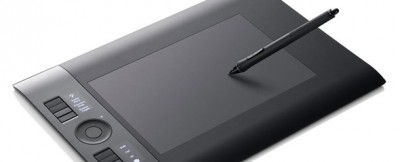
Countless hours as a pixel pusher can have painful repercussions on one’s limbs. Continuous use of a mouse can cause repetitive stress injuries and even carpal tunnel syndrome – due to the unnatural position of the wrist and tension in the muscles used to grip and move the cumbersome little robotic rodent.
Thankfully, technology provides us with a variety of solutions to ease those aching appendages whilst increasing productivity. With the proliferation of touch and multi touch devices, users are becoming accustomed to a variety of input methods. I used to suffer painful aches in my mouse elbow until I made the transition to a drawing tablet several years ago.
Though the learning curve may seem daunting at first, once you have mastered the drawing tablet, it’s hard to imagine ever going back to using a conventional mouse.
There are a number of input technologies available, depending on the type of work you are creating and how much you are willing to spend.
Wacom are probably the most prolific brand of drawing tablet, over the years developing a number of technologies and innovations to help speed up work processes, and some might say, cash in on the multitude of accessories and replacement parts available. Generally considered a higher end input device, they do have cheaper lightweight alternatives such as the Bamboo range of drawing tablets for the budget conscious user.
These days there are a number of smaller manufacturers producing cheaper alternatives with similar results. Some of the cheaper tablets may have their drawbacks, for instance the Monoprice tablet, though favourably reviewed for its responsiveness, and considerably cheaper, is an ‘active tablet’. This means you will require a hoard of batteries for the stylus, whereas Wacom uses a passive electromagnetic induction system, sans batteries.
Another form of input device, usually reserved for illustrators and 3D animators is the LCD tablet monitor. These devices allow the user to draw directly, which provides direct visual feedback when creating your masterpiece. The Cinteq range from Wacom has been a stalwart of the LCD tablet market, though once again the smaller independents are chomping at Wacoms heels to produce cheaper alternatives. One of my illustration pals recently made the transition from a Wacom Intuos 4 drawing tablet, to the Yiynova MSP19u LCD tablet, and hasn’t looked back.
So next time you’re cracking your knuckles, or cursing your creaky elbows, why not consider trying a drawing tablet?

